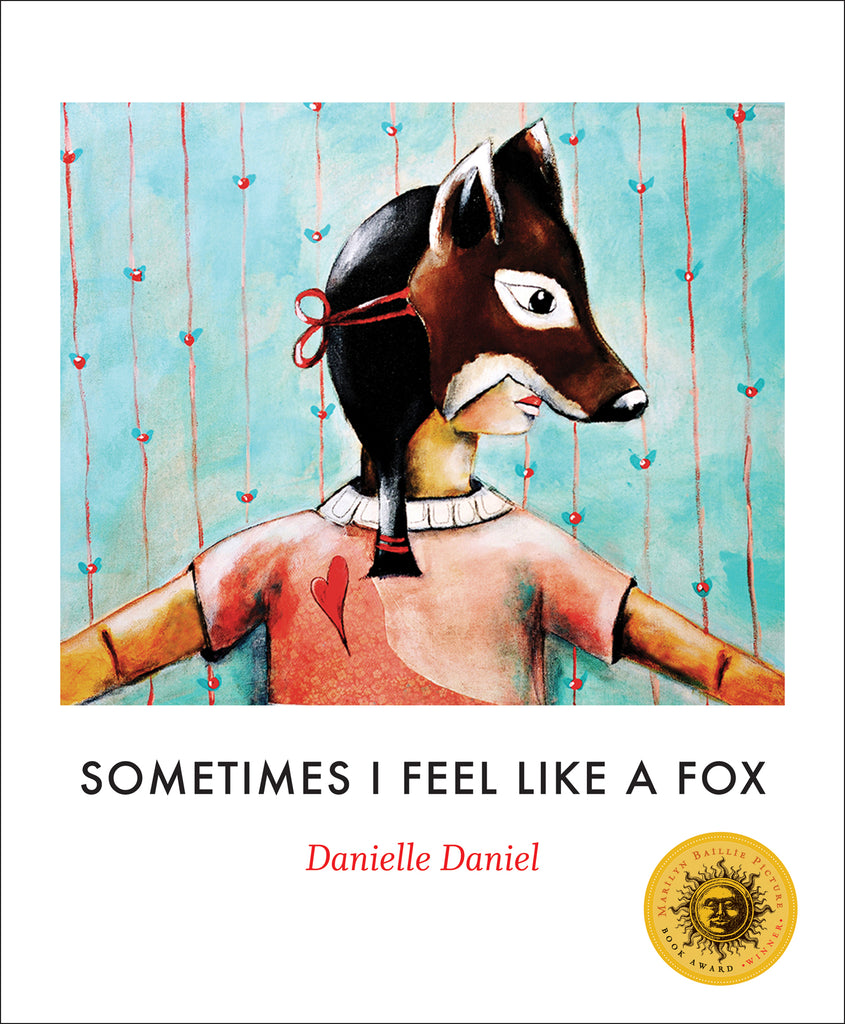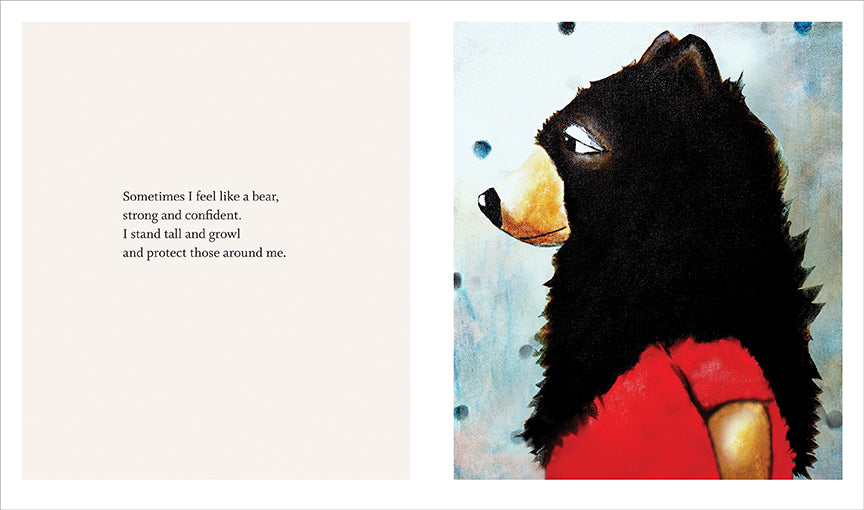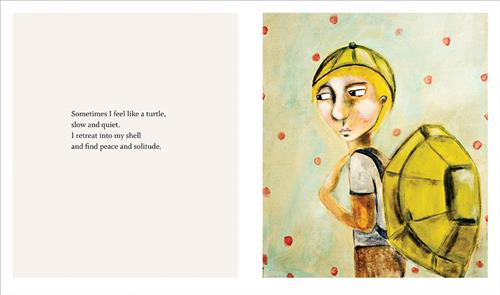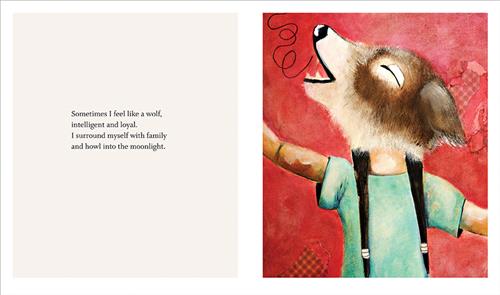Children’s love for animals and disguise come together in this award-winning introduction to the Anishinaabe tradition of totem animals.
In this introduction to the Anishinaabe tradition of totem animals, young children explain why they identify with different creatures such as a deer, beaver or moose. Delightful illustrations show the children wearing masks representing their chosen animal, while the few lines of text on each page work as a series of simple poems throughout the book.
In a brief author’s note, Danielle Daniel explains the importance of totem animals in Anishinaabe culture and how they can also act as animal guides for young children seeking to understand themselves and others.
Key Text Features
author’s note
Correlates to the Common Core State Standards in English Language Arts:
CCSS.ELA-LITERACY.RL.K.7
With prompting and support, describe the relationship between illustrations and the story in which they appear (e.g., what moment in a story an illustration depicts).
CCSS.ELA-LITERACY.RL.1.4
Identify words and phrases in stories or poems that suggest feelings or appeal to the senses.
CCSS.ELA-LITERACY.RL.2.4
Describe how words and phrases (e.g., regular beats, alliteration, rhymes, repeated lines) supply rhythm and meaning in a story, poem, or song.
CCSS.ELA-LITERACY.RL.3.7
Explain how specific aspects of a text's illustrations contribute to what is conveyed by the words in a story (e.g., create mood, emphasize aspects of a character or setting)
CCSS.ELA-LITERACY.RL.4.2
Determine a theme of a story, drama, or poem from details in the text; summarize the text.
CCSS.ELA-LITERACY.RL.5.7
Analyze how visual and multimedia elements contribute to the meaning, tone, or beauty of a text (e.g., graphic novel, multimedia presentation of fiction, folktale, myth, poem).
Children’s love for animals and disguise come together in this award-winning introduction to the Anishinaabe tradition of totem animals.
In this introduction to the Anishinaabe tradition of totem animals, young children explain why they identify with different creatures such as a deer, beaver or moose. Delightful illustrations show the children wearing masks representing their chosen animal, while the few lines of text on each page work as a series of simple poems throughout the book.
In a brief author’s note, Danielle Daniel explains the importance of totem animals in Anishinaabe culture and how they can also act as animal guides for young children seeking to understand themselves and others.
Key Text Features
author’s note
Correlates to the Common Core State Standards in English Language Arts:
CCSS.ELA-LITERACY.RL.K.7
With prompting and support, describe the relationship between illustrations and the story in which they appear (e.g., what moment in a story an illustration depicts).
CCSS.ELA-LITERACY.RL.1.4
Identify words and phrases in stories or poems that suggest feelings or appeal to the senses.
CCSS.ELA-LITERACY.RL.2.4
Describe how words and phrases (e.g., regular beats, alliteration, rhymes, repeated lines) supply rhythm and meaning in a story, poem, or song.
CCSS.ELA-LITERACY.RL.3.7
Explain how specific aspects of a text's illustrations contribute to what is conveyed by the words in a story (e.g., create mood, emphasize aspects of a character or setting)
CCSS.ELA-LITERACY.RL.4.2
Determine a theme of a story, drama, or poem from details in the text; summarize the text.
CCSS.ELA-LITERACY.RL.5.7
Analyze how visual and multimedia elements contribute to the meaning, tone, or beauty of a text (e.g., graphic novel, multimedia presentation of fiction, folktale, myth, poem).
| Published By | Groundwood Books Ltd — Jul 15, 2017 |
| Specifications | 40 pages | 8.25 in x 10 in |
| Keywords | explanation; |
|
Supporting Resources
(select item to download) |
Teacher's Guide |
| Written By |
DANIELLE DANIEL is an award-winning author and illustrator whose journey into artmaking and book publishing has gone hand in hand with all she has learned—and continues to learn—about her Indigenous ancestry and her relationship with the land. Her picture books include Sometimes I Feel Like a Fox (Marilyn Baillie Picture Book Award), Sometimes I Feel Like a River and Once in a Blue Moon. She has also written novels for children and adults. Danielle lives on Manitoulin Island with her family. |
| Illustrated by |
DANIELLE DANIEL is an award-winning author and illustrator whose journey into artmaking and book publishing has gone hand in hand with all she has learned—and continues to learn—about her Indigenous ancestry and her relationship with the land. Her picture books include Sometimes I Feel Like a Fox (Marilyn Baillie Picture Book Award), Sometimes I Feel Like a River and Once in a Blue Moon. She has also written novels for children and adults. Danielle lives on Manitoulin Island with her family. |
| Written By |
|
DANIELLE DANIEL is an award-winning author and illustrator whose journey into artmaking and book publishing has gone hand in hand with all she has learned—and continues to learn—about her Indigenous ancestry and her relationship with the land. Her picture books include Sometimes I Feel Like a Fox (Marilyn Baillie Picture Book Award), Sometimes I Feel Like a River and Once in a Blue Moon. She has also written novels for children and adults. Danielle lives on Manitoulin Island with her family. |
| Illustrated by |
|
DANIELLE DANIEL is an award-winning author and illustrator whose journey into artmaking and book publishing has gone hand in hand with all she has learned—and continues to learn—about her Indigenous ancestry and her relationship with the land. Her picture books include Sometimes I Feel Like a Fox (Marilyn Baillie Picture Book Award), Sometimes I Feel Like a River and Once in a Blue Moon. She has also written novels for children and adults. Danielle lives on Manitoulin Island with her family. |
| Audience | ages 4 to 7 / grades K to 2 |
| Reading Levels |
Guided Reading O
Lexile AD640L |
| Key Text Features | author's note; explanation |
| Common Core |
CCSS.ELA-LITERACY.RL.2.4
CCSS.ELA-LITERACY.RL.3.7 CCSS.ELA-LITERACY.RL.K.7 CCSS.ELA-LITERACY.RL.1.4 CCSS.ELA-LITERACY.RL.4.2 CCSS.ELA-LITERACY.RL.5.7 |
Commended, 49th Shelf Favourite Picture Books of the Year, 2015
Commended, New York Public Library Best 100 Books for Reading and Sharing, 2015
Commended, TD Summer Reading Club Top Recommended Reads, 2016
Short-listed, Blue Spruce Award, 2017
Winner, Marilyn Baillie Picture Book Award, 2016
Commended, CCBC Best Books for Children and Teens, 2016
Commended, CCBC Best Books for Kids and Teens, 2016
Commended, TD Summer Reading Club, Recommended Reads, 2022
“A captivating book with an important message.” — ETFO Voice
“Reminds readers of the importance of critical self-reflection and of our connection to the animal world — two ideas worth championing at any age.” — Quill & Quire
“This book will fascinate children expanding their horizons and learning about other cultures (or, in the case of Anishinaabe kids, their own).” — Kirkus Reviews
“The stylized masks, soft colours and big eyes of the children convey a seriousness, almost an otherworldliness, to the animal/human relationship. . . . Haunting and thought-provoking.” — Toronto Star




